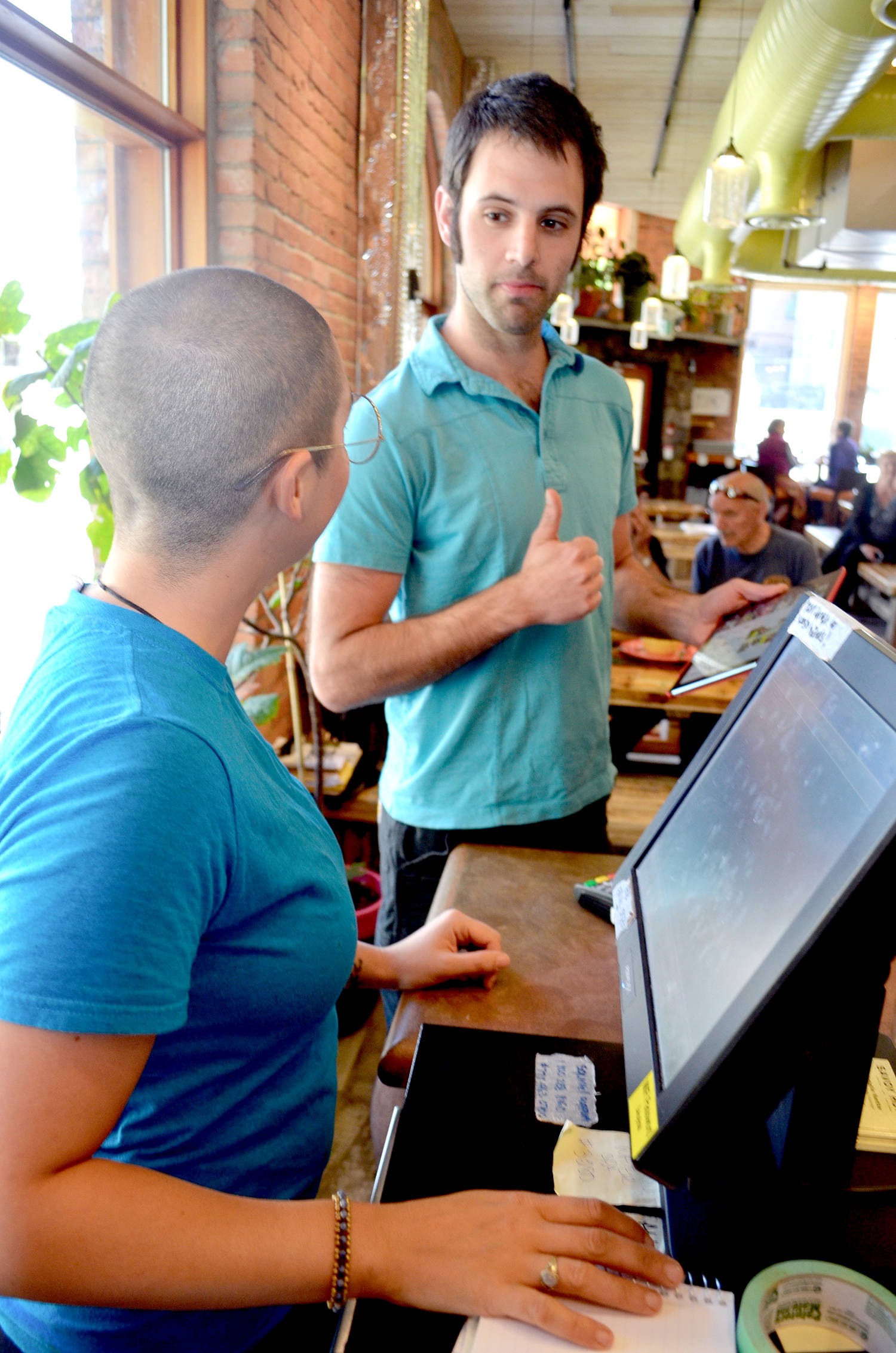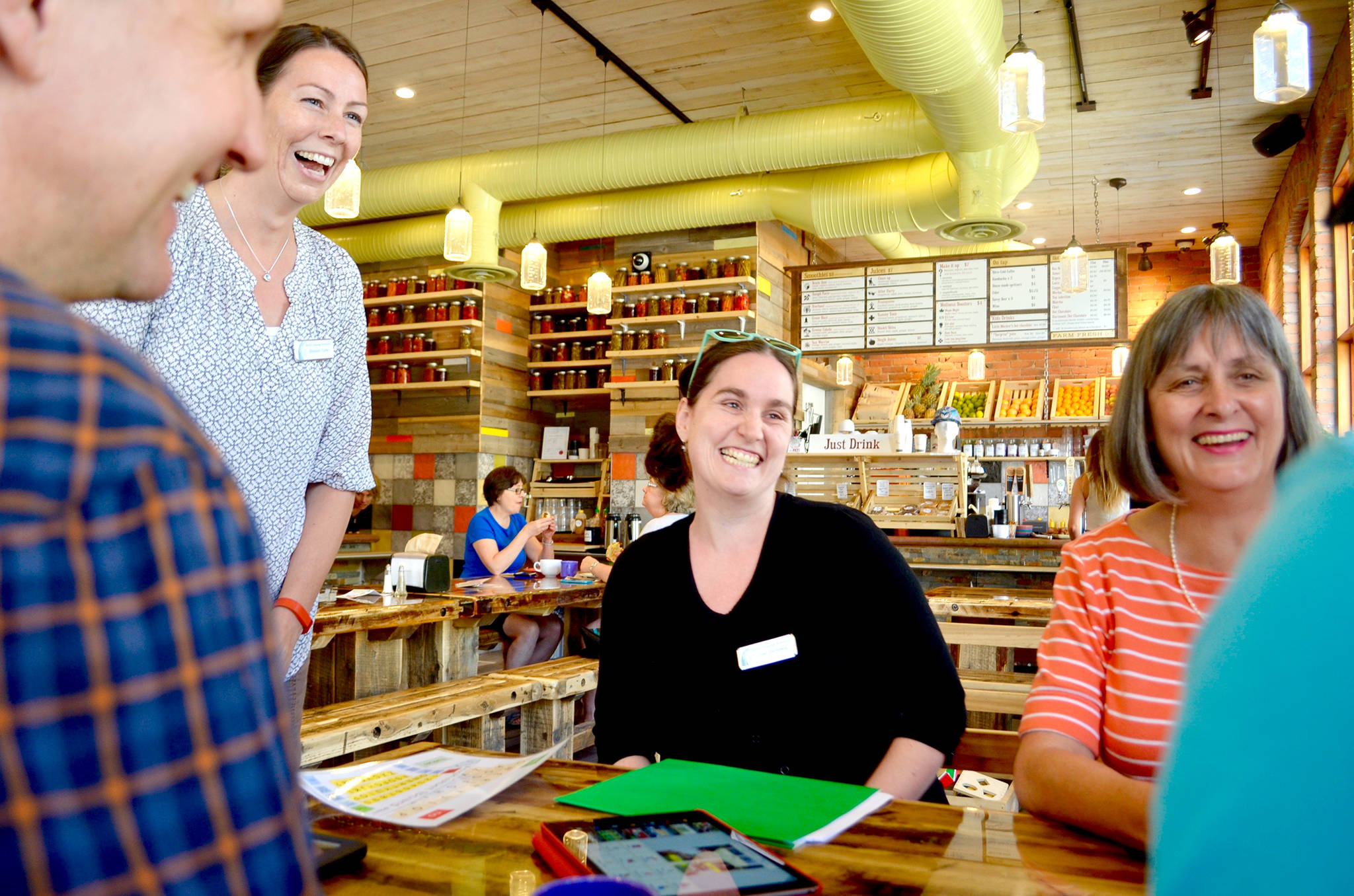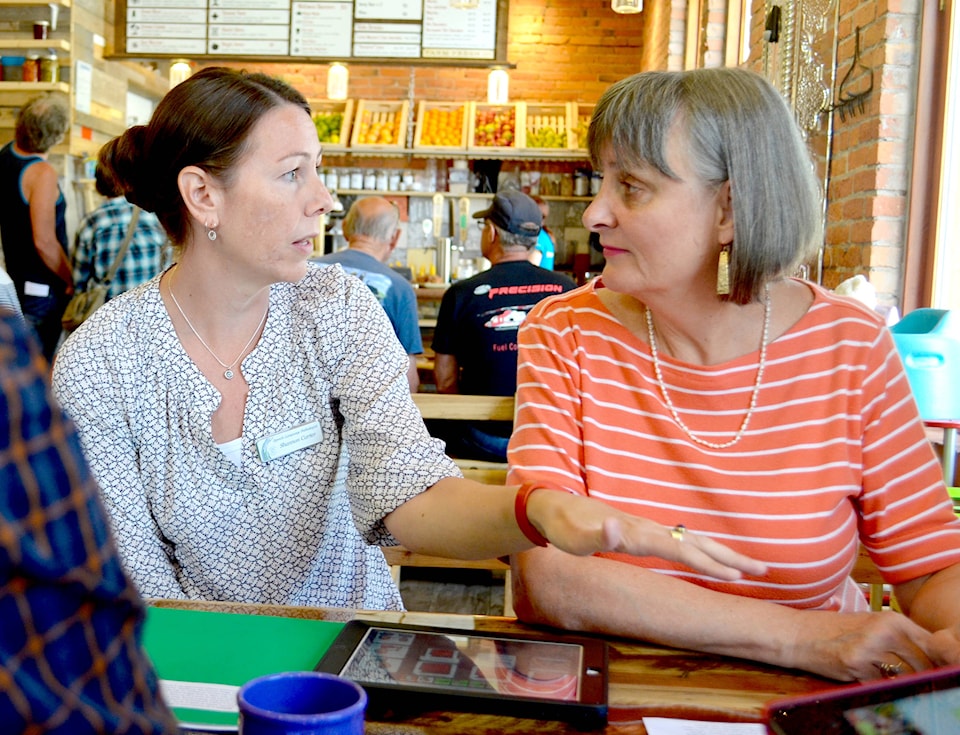Communication is a human right.
And according to SD8 speech language pathologist Shannon Carter, there’s at least one student at every Kootenay Lake school that needs some sort of technology to help them properly express themselves.
That’s why this year they ordered the complex needs bundle from Special Education Technology BC (SETBC), a Ministry of Education resource program that provides districts with the technology students need to make themselves understood — whether it’s an iPad, a cell phone app or simply a laminated keyboard.
“If you’re out in the community and can’t walk, there are a lot of adaptations that make things more accessible for you, things like hand rails,” speech language pathologist Lisa Tremblay told the Star.
“The question is: what would the adaptation be for something that’s invisible?”
That’s the question she posed to Nelson Mayor Deb Kozak, trustee Curtis Bendig and SD8 director of independent learning Ben Eaton during an event Tuesday morning at Farm Fresh Cafe. Thrown as part of Speech and Hearing Month, which aims to raise awareness of the work done by speech language pathologists, the event was also an opportunity for them to showcase their new toys.
And then, as part of their #CommunicateAwareness social media campaign, they invited their attendees (including the Star) to attempt to order a coffee and a treat without using their voice. The resulting scene was filmed by a documentary crew from SETBC.
“It’s so powerful to bring these technologies to people who are normal communicators and give them a chance to experience what it’s like to have to communicate in a different way,” Tremblay said.
“It’s tricky, you want to say something but you get stopped by the limits of your device.”
They encouraged participants to pay attention to all the other ways they communicate, using facial expressions or hand gestures like a thumbs up.
“Deb has a very expressive face,” Bendig’s iPad proclaimed in a digitized voice, while she was ordering.
All the participants successfully obtained their coffee — Kozak and Bendig used iPads, Eaton used a cell phone app to type his request, and the Star used the low-tech option, a sheet of paper with bright letters printed on it.
Carter noted that each option can be custom-designed by the student — you can tweak the iPad’s voice to be higher or lower, or maybe even sound like Yoda — and you can pre-program certain phrases that are used routinely, such as “where can I find the washroom?” or “Hello, how are you?”
And now they’d like SD8 students — and whoever else is keen — to try it out. To participate in the #CommunicateAwareness campaign, participants are encouraged to think of a message they want to communicate, such as ordering dinner, then document themselves doing it, posting the results to Facebook, Twitter or Instagram.
“It’s really amazing, because this is bringing our students the curriculum in different ways. Something that was inaccessible before is now accessible in a different sort of way,” Tremblay said.
“Our range of what we do is quite large as speech pathologists, and there are so many different ways people communicate — some people can speak with burps. But because communication is a basic human right, it’s important to provide these opportunities for all the children in our schools.”


